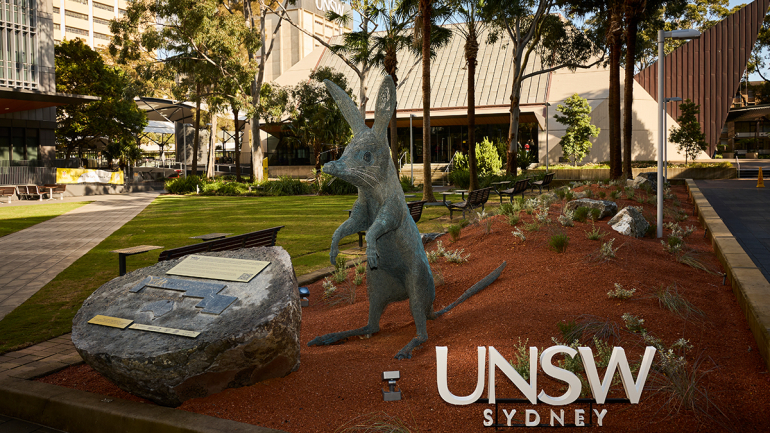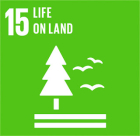Why do we celebrate wildlife?
World Wildlife Day celebrates the incredible diversity of wild animals and plants that make our planet unique. From towering eucalyptus forests to the tiniest tree frogs, wildlife plays a vital role in maintaining healthy ecosystems and supporting life as we know it. But did you know that our planet’s wild mammal population has declined by 82% since prehistory[1]?
The biggest threats to wildlife today are[2]:
- Habitat destruction – intensive agriculture, urban expansion, and deforestation reduce the spaces where wildlife can live and thrive.
- Pollution – pesticides, plastic waste, and hazardous chemicals contaminate ecosystems and harm species.
- Climate change – rising temperatures, extreme weather events, and shifting ecosystems make survival increasingly difficult for many species.
- Invasive species – non-native species introduced by human activities often outcompete or prey on local wildlife.
- Overexploitation – unsustainable fishing, hunting, and resource extraction deplete natural populations beyond recovery.
In Australia alone, one million species are currently threatened with extinction[3]. Yet, wildlife underpins human well-being and progress toward the Sustainable Development Goals (SDGs).
Protecting wildlife and biodiversity at UNSW
Environmental sustainability goes beyond reducing carbon emissions. UNSW is committed to restoring and protecting natural ecosystems.
🌿 Nature Positive Pledge: In 2022, UNSW joined this global initiative led by the United Nations Environment Programme, committing to reducing our ecological footprint. Since then, we’ve developed a campus nature value metric and assessed our supply chain’s impact on nature to guide future conservation efforts (read more in the 2023 sustainability report).
🌏 The commitment to conservation is reflected in UNSW Societal Impact Framework, with the goal to ‘Restore 30% of ecosystems in areas of particular importance for biodiversity to improve planetary health.’
🌱 Carbon offsetting with a conservation focus: In 2023, UNSW voluntarily offset 7,680 tonnes of emissions through Greenfleet’s Australian native reforestation projects, which restore critical wildlife habitats.
🌾 Bush Tucker Trail: In 2024, UNSW staff and students planted 265 native trees to enhance biodiversity and increase Indigenous knowledge of native flora on campus.
🌳 Grounds management: Our campus maintains at least 90% native trees (per count) to support local ecosystems and provide habitat for urban wildlife.
Who’s working on solutions right here at UNSW?
This month we are spotlighting Jodi Rowley, Associate Professor in the Centre for Ecosystem Science at the Science Faculty.
- Can you share a quick summary of your project or work in one sentence?
I’m a conservation biologist with a passion for frogs and other amphibians. I use a variety of approaches to conduct my research work, ranging from fieldwork to molecular work. Additionally, I am a lead scientist for the national citizen science project, FrogID, which has so far gathered over 1.2 million records of frogs across Australia.
- How does your work contribute to the theme of wildlife conservation?
Amphibians are amongst the most threatened groups of animals on the planet, with more than 2 in 5 species threatened with extinction. One of the biggest obstacles in their conservation is a lack of knowledge. My research, including with the FrogID project, aims to gather the information that we need to make more informed conservation decisions. Having tens of thousands of people across Australia joining me in this mission via FrogID – people power- makes it more impactful! Scientists can’t do it alone, we need to work more collaboratively and more broadly.
- What’s the most exciting or surprising thing about what you do?
Fieldwork is the most exciting thing that I do. Getting to explore beautiful parts of Australia and the world to better understand and conserve frogs is a privilege. Although, I tend to explore at night, as most frogs are nocturnal, and in damp places. A lot of my adventures when searching for frogs involve donning a headlamp and venturing into streams at night, often while it’s raining!
- Who’s a researcher or project you’d recommend we keep an eye on in this space?
There are many researchers at UNSW, particularly in Biological, Earth & Environmental Sciences, working on innovative conservation projects. Environment Recovery Project after the 2019/2020 bushfire season, led by the Centre for Ecosystem Science, was a key example of this, engaging thousands of people across the fire zone in documenting recovery. Keep an eye on Thomas Mesaglio, PhD student who is passionate about citizen science in biodiversity conservation and making waves in the field.
We all have a role to play, and it starts at UNSW.
Protecting wildlife isn’t just for scientists, every one of us can play a role! Here are a few ways to get involved:
On campus:
- Take part in urban gardening with UNSW Urban Growers or The Producers.
- Explore our campus’s significant trees and native species.
- Protect wildlife from plastic pollution by reducing waste on campus. Start by bringing your own cup/cutlery/container to your favourite food and drink retailer.
At home and beyond:
- Plant native species in your garden or balcony to create wildlife-friendly spaces.
- Reduce single-use plastics, a significant threat to marine life.
- Participate in citizen science programs like FrogID or the Australian Bird Count.
- Advocate for stronger biodiversity policies: your voice matters!
Need inspiration?
- Read “Hope for animals and their world – How endangered species are being rescued from the brink” (Jane Goodall)
- Watch “Our Planet”
The threats weighing on wildlife and biodiversity are often big and complex, so much so that individuals might feel powerless about them. However, every person’s small actions add up, which can make a difference for species and ecosystems.
Happy World Wildlife Day!
Stay tuned for our next Sustainability Spotlight on World Water Day.
[1] https://ourworldindata.org/wild-mammals-birds-biomass
[2] IPBES (2019): Summary for policymakers of the global assessment report on biodiversity and ecosystem services of the Intergovernmental Science-Policy Platform on Biodiversity and Ecosystem Services. https://doi.org/10.5281/zenodo.3553579
[3] Australia State of the Environment Report (2021). https://soe.dcceew.gov.au/overview/introduction.



